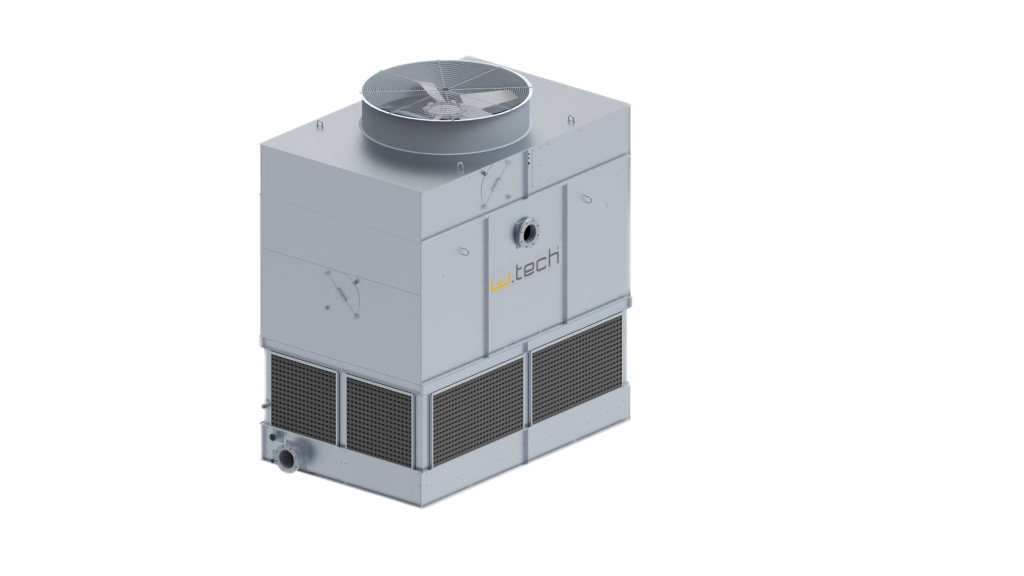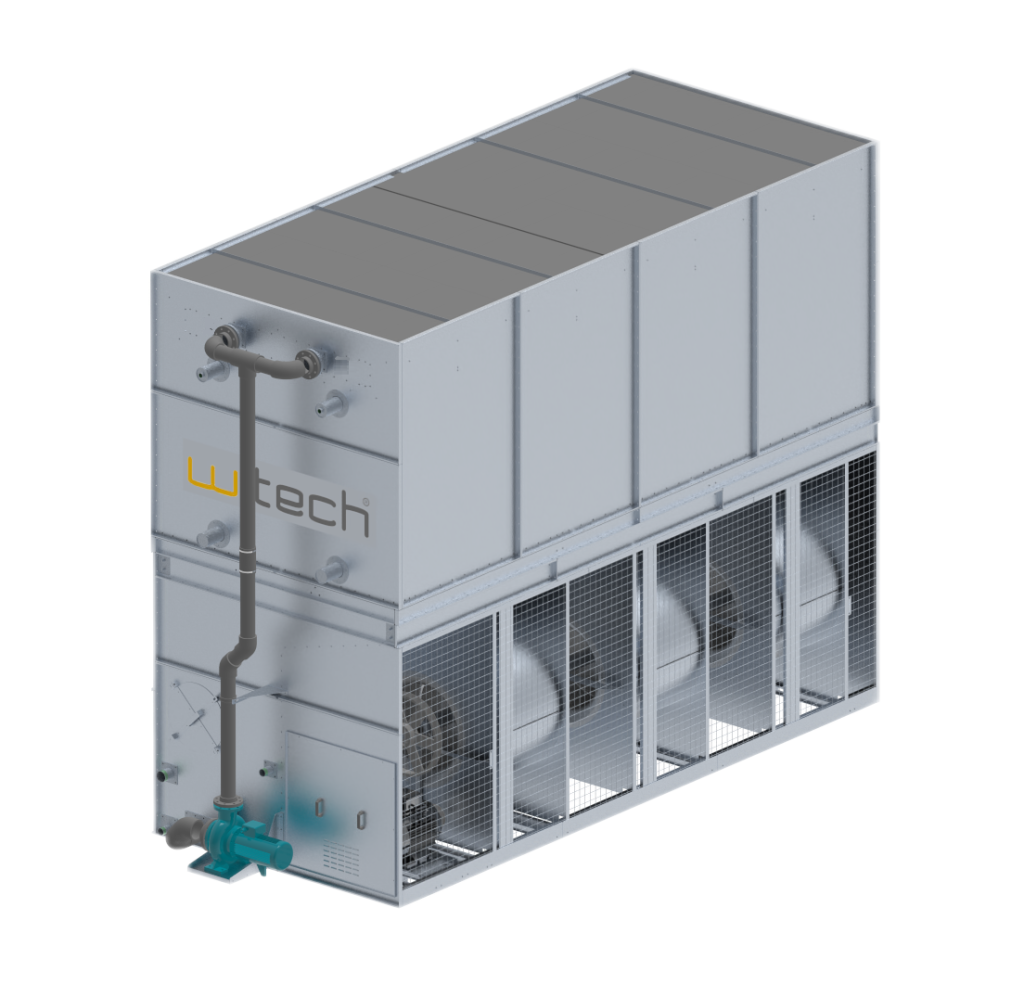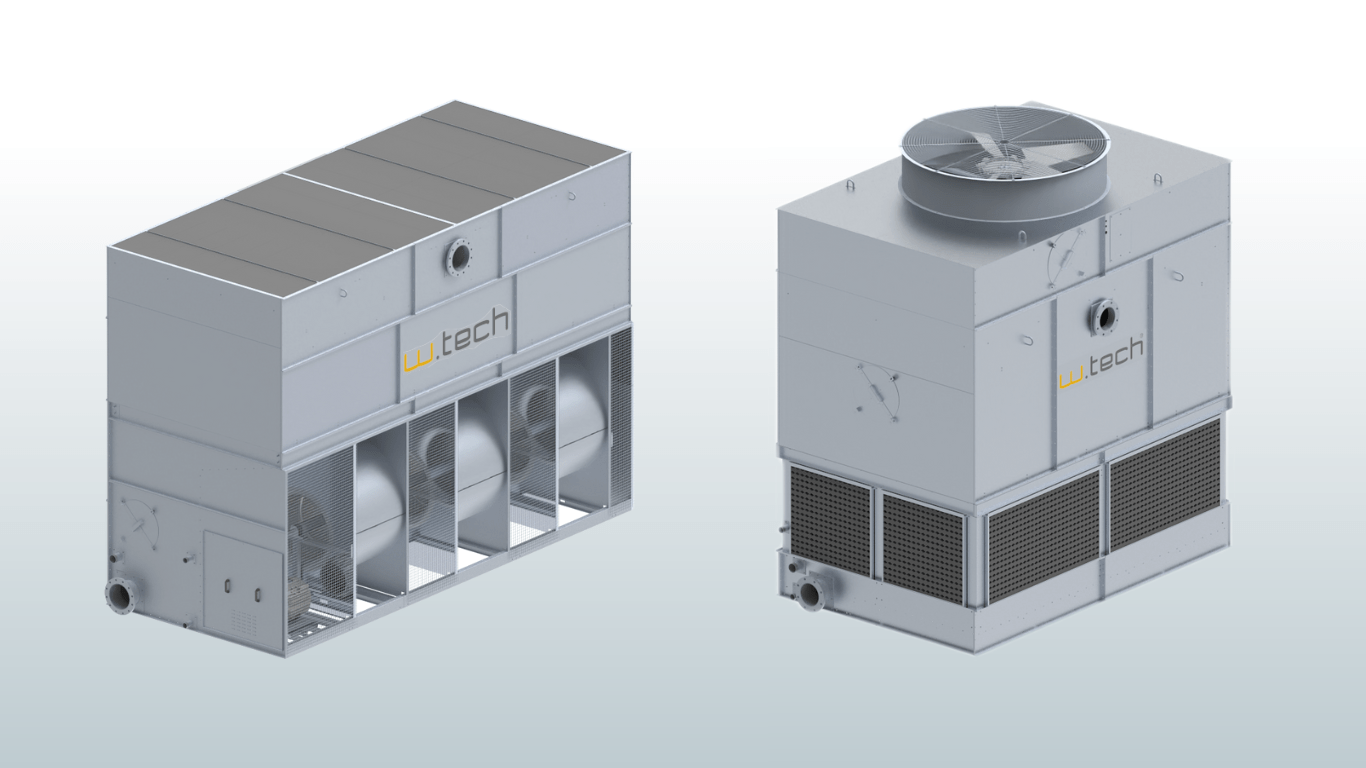Evaporative towers play a crucial role in industrial cooling, air conditioning and many other sectors. These devices lower the temperature of water by exploiting the evaporation process, thus contributing to energy efficiency and environmental sustainability. A key element in the design of an evaporative tower is the choice between axial and centrifugal fans, each with its own characteristics and advantages.
In this article, we will explore in detail the advantages and disadvantages of axial and centrifugal fans in evaporative towers. Understanding the differences between these two types of fans is essential for the design, selection and effective operation of cooling systems. We will examine their performance in terms of energy efficiency, adaptability to different atmospheric conditions, acoustic impact and maintenance complexity.
So let’s dive into this in-depth analysis to help cooling professionals and enthusiasts make informed decisions when it comes to choosing the right type of fan for their cooling needs.
Towers with axial fans
Advantages of axial fans
- Energy efficiency: Axial fans are known for their high efficiency in cooling water. They provide an even distribution of air across the heat exchange surfaces, optimising the evaporation process.
- Reduced space requirements: towers with axial fans are usually more compact, taking up less space than those with centrifugal fans. This makes them suitable for sites with space limitations.
- Ease of maintenance: Axial fans are generally easier to maintain, as they are easily accessible for cleaning and regular inspection.
Disadvantages of axial fans
- Noise: Sometimes, axial fans can generate more noise than centrifugal fans, which may be problematic in noise-sensitive environments.
- Sensitivity to atmospheric conditions: The efficiency of towers with axial fans can vary depending on atmospheric conditions, such as wind speed and humidity, affecting their cooling capacity.
- More frequent maintenance: Due to their open configuration, axial fans can accumulate debris or dirt more easily, thus requiring more regular cleaning and maintenance.

Axial fan evaporative tower
Centrifugal fan towers
Advantages of centrifugal fans
- Airflow control: Centrifugal fans generate a more uniform and controlled airflow, contributing to better heat exchange. This makes them suitable for more demanding industrial applications.
- Less noise: Centrifugal fans are usually quieter than axial fans, making them ideal for environments where noise is a concern.
- Installation flexibility: Centrifugal fan towers can be installed more flexibly, adapting to different plant configurations.
Disadvantages of centrifugal fans
- Space requirements: Towers with centrifugal fans tend to take up more space than those with axial fans, which can be a problem at sites with space limitations.
- Lower energy efficiency: In general, centrifugal fans may have a slight reduction in efficiency compared to axial fans, although they are still efficient compared to other cooling systems.
- Maintenance complexity: Maintenance of centrifugal fans may require more attention and expertise due to their more complex configuration.

Centrifugal fans tower
Conclusions
In the ever-changing world of evaporative cooling, the choice between axial and centrifugal fans remains a critical decision for designers, engineers and plant operators. Both types of fans offer unique advantages and disadvantages, and the best choice depends on the specific needs of the application. Continuous innovation in the industry gives us more and more options to meet cooling needs efficiently and effectively, contributing to the sustainability and energy efficiency of industrial and commercial cooling systems.







